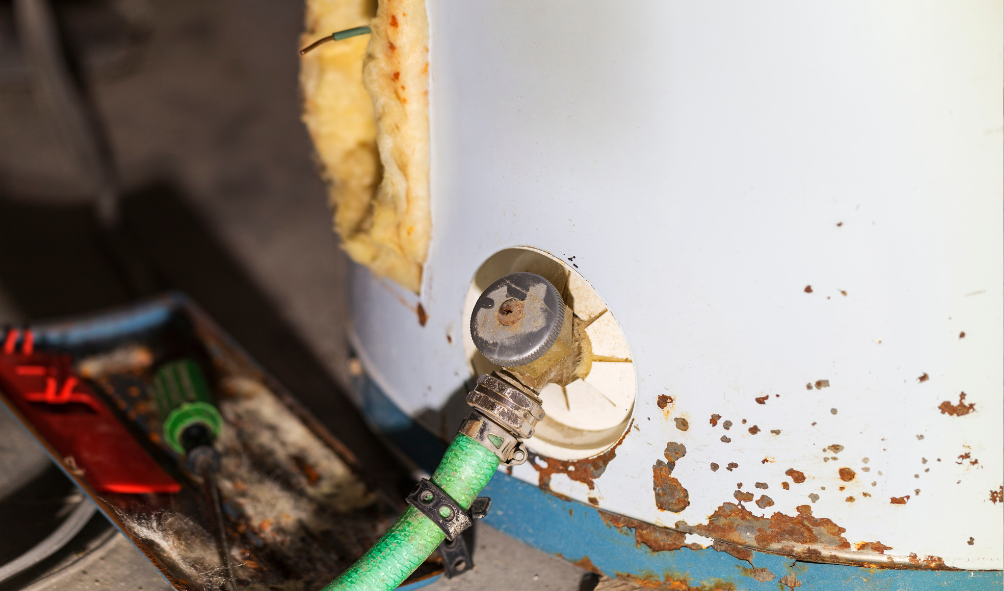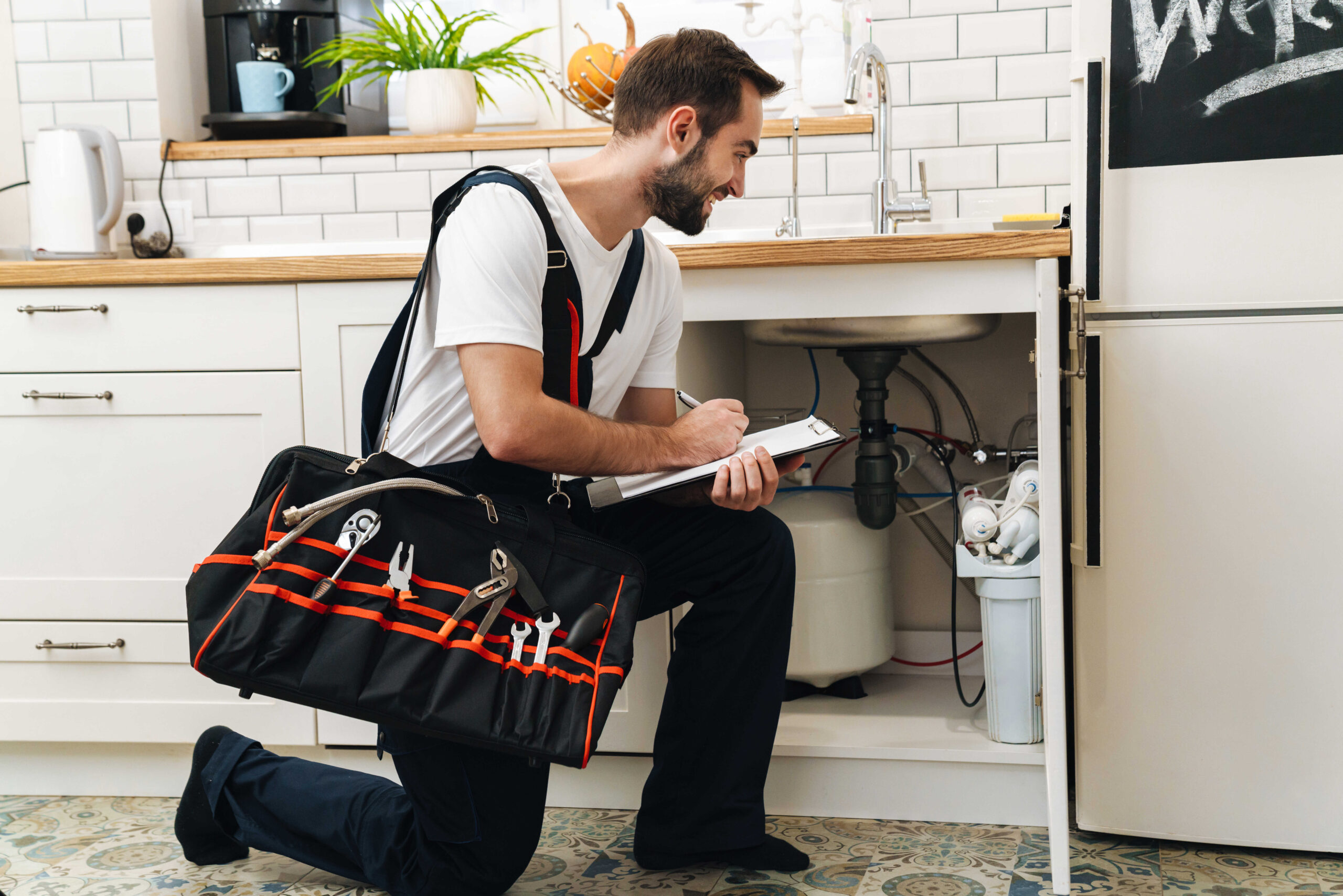
Safety First: Key Safety Precautions in Water Heater Repair
Discover essential safety precautions for water heater repair. Ensure your home’s safety with our expert guide on water heater maintenance.

Burst pipes can catch anyone off guard, disrupting our daily lives with their sudden onset and the chaos that follows. This prevalent problem affects numerous households and communities, yet the intricate causes and preventative strategies often remain obscure to many. Our detailed guide aims to shed light on the complexities behind a burst pipe. We’ll delve into the multitude of factors, such as environmental conditions, material degradation, and improper usage, that can lead to this unwelcome event. Alongside this, [Company Name] provides practical advice on how to identify early warning signs and implement effective preventive measures. By understanding and applying this knowledge, you can safeguard your home against the unexpected and often costly consequences of pipe bursts.
Pipes can burst due to a myriad of reasons ranging from environmental factors to poor maintenance. Let’s delve into the common causes.
A major factor in burst pipe incidents is freezing weather. When temperatures plummet, water inside the pipes can freeze. This frozen water expands, exerting tremendous pressure against the pipe walls. The pressure can become so intense that it exceeds the strength of the pipe, leading to cracks and ultimately a burst pipe. This issue is especially prevalent in pipes that are not adequately insulated or are located in unheated areas of a home, such as basements, attics, or outside walls. Regularly inspecting these areas and ensuring proper insulation can help prevent a burst pipe due to freezing conditions.
Aging pipes, particularly those fabricated from metal, are highly susceptible to corrosion. This corrosion gradually weakens the pipe’s structural integrity, making it more vulnerable to a burst pipe. The combination of water, oxygen, and metal leads to rust and degradation, which is accelerated in certain water types, such as hard water. Older plumbing systems, therefore, require more frequent inspections and maintenance to prevent a burst pipe. Replacing old, corroded pipes with newer materials like PVC or PEX can also greatly reduce the risk of a burst pipe due to corrosion and age.
Excessively high water pressure is a common yet often overlooked cause of a burst pipe. Pipes are designed to handle a certain level of pressure, and when this threshold is exceeded, it puts undue strain on the plumbing system. The continuous stress from high water pressure can lead to weak spots in the pipes, eventually causing them to burst. Installing a pressure regulator and regularly monitoring the water pressure in your home are effective ways to prevent a burst pipe caused by high water pressure.
Clogs can lead to serious plumbing issues, including a burst pipe. When a blockage occurs, water gets trapped in the pipe, building up pressure behind the clog. If the blockage is severe and not addressed in time, this pressure can become so great that it causes the pipe to burst. Regular maintenance, including cleaning and inspecting pipes for clogs, is crucial in preventing a burst pipe due to blockages. In instances where clogs are persistent or severe, professional assistance might be necessary to clear the pipes and mitigate the risk of a burst pipe.

To effectively prevent the issues associated with a burst pipe, it is essential to be vigilant about the warning signs that may signal an impending problem. Recognizing these signs early can save you from the considerable inconvenience and damage a burst pipe can cause. Key indicators include unusual noises from your plumbing, such as banging or whistling sounds that suggest high water pressure or water hammer. Visible signs of wear, like rust or corrosion on pipes, also warn of potential weakness that could lead to a burst. Additionally, unexplained spikes in your water bill can indicate hidden leaks, which are precursors to a burst pipe. Regular monitoring of these aspects of your plumbing system can be instrumental in averting the complications that arise from a burst pipe.
One of the early warning signs of a potential burst pipe is the presence of unusual sounds, such as clanging or banging, coming from your pipes. This phenomenon, known as water hammer, often indicates high water pressure within the plumbing system. These sounds occur when the flow of water is suddenly stopped or changed, causing the water to crash against the pipe walls. This continuous impact can weaken pipes over time, increasing the risk of a burst pipe. Regularly listening for and addressing these noises can be crucial in preventing a burst pipe scenario.
Visible rust or corrosion on your pipes is a clear indicator of deteriorating pipe health, which can lead to a burst pipe. This discoloration or flaking often appears on older metal pipes as they age and react with water and oxygen. The weakened areas caused by corrosion are more prone to cracks and breaks under pressure. Identifying and addressing these signs of corrosion early on can help you take the necessary steps, like pipe replacement or repair, to prevent a burst pipe due to weakened material.
An unexpected spike in your water bill can be a subtle yet telling sign of a hidden plumbing issue that might lead to a burst pipe. This increase often indicates a concealed leak or pressure problem within your pipes, where water is escaping unnoticed. Even a small, continuous leak can lead to a significant rise in water usage and costs. Monitoring your water bills for unusual changes and investigating any unexplained increases can help in early detection and repair of leaks, thereby reducing the risk of a burst pipe.
Taking proactive steps can significantly reduce the risk of experiencing a burst pipe.
In regions where temperatures frequently drop below freezing, insulating your pipes is a vital measure to prevent a burst pipe. Proper insulation helps maintain a consistent temperature in the pipes, reducing the likelihood of water freezing and expanding inside them, which is a common cause of a burst pipe. Insulation materials like foam sleeves or thermostatically controlled heat cables can be used. Pay special attention to pipes in unheated areas like basements, attics, and garages, as they are more prone to freezing.
Routine inspection and maintenance of your plumbing system are key in preventing a burst pipe. Regular checks help in identifying and rectifying potential issues like minor leaks, corrosion, or wear and tear before they escalate into a major problem. It’s advisable to have a professional plumber assess your system periodically, especially if you have an older home or have experienced plumbing issues in the past. This proactive approach can save you from the unforeseen disruptions and costs associated with a burst pipe.
High water pressure in your plumbing system can increase the risk of a burst pipe. To manage this, consider installing a pressure regulator. This device controls the water pressure entering your home, ensuring it stays within a safe range. A pressure regulator not only helps in preventing a burst pipe but also extends the life of your plumbing appliances and fixtures by reducing undue stress and wear.
Ignoring slow drains or clogs can lead to significant pressure build-up in your pipes, eventually causing a burst pipe. It’s essential to address these issues promptly. For minor clogs, DIY methods like plunging or using a plumber’s snake can be effective. However, for more persistent or severe clogs, professional intervention may be necessary. Regularly cleaning your drains and avoiding the disposal of inappropriate materials down the sink or toilet can help prevent clogs.
Understanding the factors that lead to a burst pipe is crucial in preventing this disruptive issue. By staying alert to warning signs and implementing effective preventive measures like pipe insulation, regular maintenance, installing a pressure regulator, and promptly addressing clogs, you can significantly reduce the risk of a burst pipe. This proactive approach helps in safeguarding your home against the inconvenience and potential expenses associated with burst pipes.

Burst pipes commonly result from freezing temperatures, as water expands when it freezes, increasing pressure inside the pipe. Other causes include corrosion in older pipes, excessive water pressure, and severe clogs. Environmental factors like seismic activity or construction work can also contribute to pipe bursts by physically damaging the pipes.
To prevent pipes from bursting in winter, it’s crucial to insulate them, especially in areas exposed to cold air. Keeping your home at a consistent, warm temperature helps too. Letting faucets drip slightly during extreme cold can relieve pressure build-up from freezing water. Additionally, disconnect outdoor hoses and use faucet covers to protect outdoor spigots.
If you discover a burst pipe, immediately turn off the main water supply to your home to prevent further water damage. Then, drain the remaining water in the pipes by turning on the faucets. It’s important to quickly move any furniture or valuables away from the affected area to minimize damage. Contact a professional plumber for repairs and consider reaching out to your insurance company if significant damage has occurred.
Yes, a small leak can eventually lead to a burst pipe. Even minor leaks can indicate underlying issues like pipe corrosion or high water pressure, which can weaken the pipe over time. It’s important to address even small leaks promptly to prevent them from escalating into major bursts, causing extensive damage and costly repairs.
Yes, certain types of pipes are more prone to bursting. For instance, metal pipes like galvanized steel or copper are more likely to burst in freezing conditions compared to PVC or PEX pipes, which can better withstand temperature changes. Older pipes are also more susceptible to bursting due to corrosion and wear over time.
High water pressure puts extra stress on your plumbing system. Over time, this constant pressure can weaken pipes, joints, and fixtures, leading to leaks or bursts. Regularly monitoring your water pressure and installing a pressure regulator if necessary can help prevent these issues.
Warning signs of an impending pipe burst include unusual noises like banging or whistling from the pipes, visible rust or corrosion on pipe surfaces, unexplained moisture or water stains on walls and ceilings, and a significant increase in water bills. These signs suggest potential weaknesses or issues in your plumbing system that should be addressed promptly.
Yes, a burst pipe can cause significant long-term damage to your home. Beyond the immediate water damage, it can lead to mold and mildew growth, which poses health risks and can weaken structural elements of your home. Electrical systems can also be compromised, increasing fire risks. Prompt repairs and thorough drying are essential to prevent these long-term issues.
Repairing a burst pipe can be complex and often requires professional expertise, especially if the damage is severe or the plumbing system is intricate. For minor issues, a handy homeowner might manage temporary fixes, but it’s advisable to seek professional help for a permanent solution to ensure safety and prevent future bursts.
To check for hidden pipe bursts, monitor for signs like unexplained wet spots on floors, walls, or ceilings, a musty odor indicating hidden mold growth, low water pressure, or strange noises from the plumbing system. Regular inspections in areas prone to leaks, such as under sinks and around appliances, can help catch hidden issues early. Using a water meter to check for unseen leaks can also be effective.

Discover essential safety precautions for water heater repair. Ensure your home’s safety with our expert guide on water heater maintenance.

Burst pipes can catch anyone off guard, disrupting our daily lives with their sudden onset and the chaos that follows. This prevalent